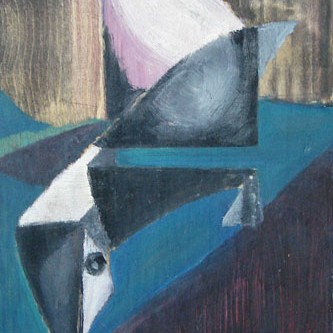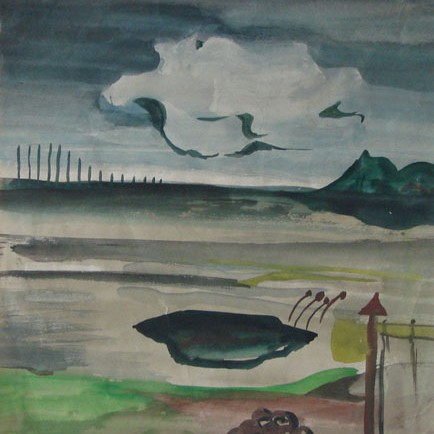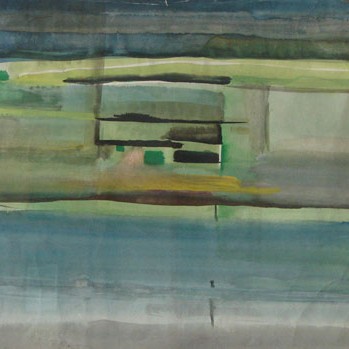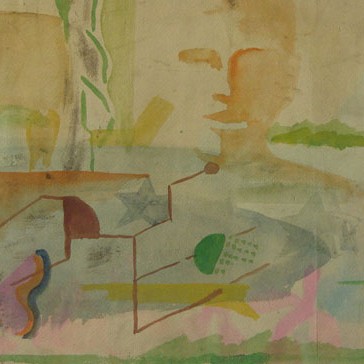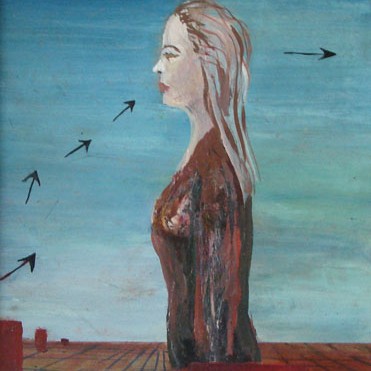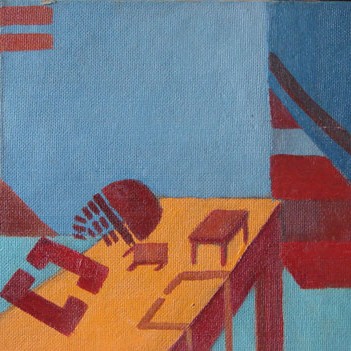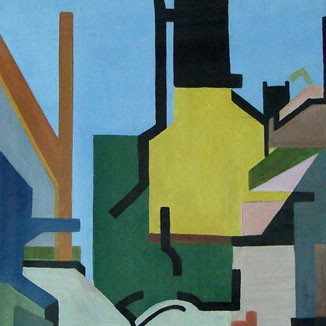Andres Tolts shows his high-school period works as equal to his later paintings which is why there is no reason to look past them. Several features catch the eye in those first gouaches and watercolours, proving the alleged unchangingness of the artist: proving that through his whole creative career he has been interested in practically the same phenomena. For example mixing the abstract and the real, the freedom of association, the ironic social nerve etc. These are charming small-format paintings that due to age peculiarities are of greater fantasy yet less refined than the ones completed but a few years later.
Tolts’s wish to display them as an essential part of his art is justified: on one hand they are the preparatory work for the future (in quite a few instances literally – treating the same motifs as in some later works), yet on the other hand these gouaches, watercolours and oil paintings can be regarded as independent. All of their virtues and flaws are pluses and minuses typical to such cases: the intimacy and freshness of playfulness and artistic pursuits on one hand and the insufficient professional execution on the other hand.
Tolts is in no way a “filigree” artist whose etudes from early years would reveal Wiiralt-like or Subbi-like innate technical skills – rather to the contrary: at times Tolts’s works of that period leave not only a pupil-like impression but strike us almost as bad painting according to the canon of “good art” of those times. The clumsiness of figure treatment ("The Airport") or the rough colour transitions ("The Cloud") might leave a poor impression but as Tolts never became a painter par excellence, it must be asked already at this early stage – what is his “strong suit”? With what does Tolts prove that he is indeed an artist although according to the 60ies standard his painting skills are still inadequate, to put it mildly?
The first answer, of course, is that with these paintings Tolts breaks apart from the long 30ies of Estonian art. In one way or another “Pallas“ sun had cast its shadow on the local art history until that time. Tolts abandons picturesqueness, abandons “beautiful” painting and expresses contempt over such strange phenomenon as “brushwork” in one of his interviews. He paints in a modern way, conceptually, brightly.
Second, it is exciting to see the numerous goals in Tolts’s artistic pursuits that are often exhibited at the same time. That in itself wouldn’t even be so uncommon but it must be taken into account that quite frequently these goals are almost opposite. Thus Tolts examines the possibilities of abstract and pop-art, surrealism and neo-realism, often creating battlefields in his paintings where some of the above-mentioned – if not all – exist together.
Yet, if limited by pure art-historic rhetoric it must be said that the creation of such battlefields on one hand and the bold non-painting execution on the other hand created a new quality in the 60ies art, especially embraced by those who were seriously annoyed by the excess glorification of art or art becoming increasingly self-centred. In Tolts’s early works there is something from Raivo Korstnik, something from Nikolai Kormašov, Jüri Arrak and Lembit Sarapuu but still that high-school boy had his entirely own path to follow that wasn’t rooted so much in the chains of art history but social touch and aesthetic sovereignty. On one hand it’s a new way to see the world, a kind of exploration of the various crossing areas of the modern culture; positioning oneself in the post-war cultural reform, in modern art trends and transformed environmental and human treatment, searching and insecure at first but increasingly clearer over time.
.png)
